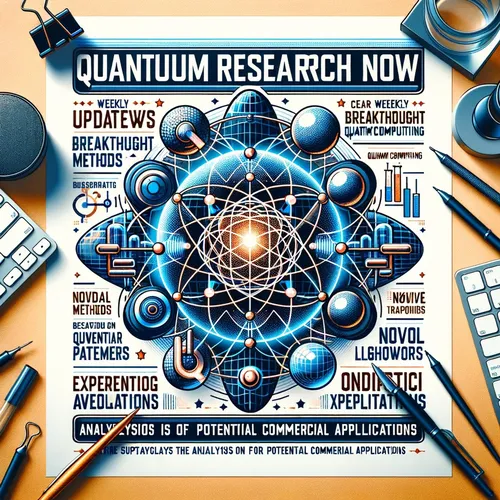IQM Emerald: 54-Qubit Quantum Leap Ignites Cloud Access and Cancer Research
- Author
- Quiet. Please
- Published
- Fri 08 Aug 2025
- Episode Link
- https://www.spreaker.com/episode/iqm-emerald-54-qubit-quantum-leap-ignites-cloud-access-and-cancer-research--67302013
This is your Quantum Research Now podcast.
They said quantum computers were tomorrow’s magic, but today, I’m here to tell you: the future just leapt into the present. I’m Leo, Learning Enhanced Operator, and this is Quantum Research Now.
If you haven’t checked your science feeds, today’s headlines are electrified with news from IQM Quantum Computers. From their headquarters in Finland to bustling labs in Japan and Germany, IQM just launched their largest cloud-accessible system yet: the IQM Emerald, a 54-qubit superconducting quantum processor. That’s almost three times the number of qubits compared to their previous system, and the leap isn’t just about quantity—it's about quality. Emerald doesn’t just scale up; it preserves the reliability and coherence crucial for meaningful computation.
Imagine you’re trying to solve a puzzle—say, a city-sized jigsaw. Classical computers tackle it piece by piece, methodically. What Emerald does is lay out huge swathes of the puzzle simultaneously, rearranging strategies with every quantum tick—thanks to phenomena like superposition and entanglement. In practical terms, this means that researchers and developers can now scale up their quantum algorithms, testing where classical approaches start to crack and where quantum power takes over. Quanscient, for instance, just ran the first 3D advection-diffusion simulation on a superconducting quantum processor using this platform, slashing runtime by 62% and proving that quantum computation isn’t just a laboratory quirk, but a tool for real-world engineering.
The IQM team is handing the keys to the quantum kingdom to everyone. There’s a free access plan, so whether you’re a professional theorist or an undergraduate curious about qubits, you can run your very first quantum experiment without a gatekeeper in your way. The goal? Turn talent and curiosity into results, sparking the next generation of quantum breakthroughs. And this isn’t happening in isolation—IQM just signed a major distribution agreement with TOYO Corporation in Japan, promising full-stack quantum machines for campuses and enterprises across Asia.
The broader stakes couldn’t be clearer. With global teams pushing ever-higher qubit counts, improved fidelity, and deeper partnerships, we’re watching a new technological arms race—but one that might cure cancer, optimize logistics, and power next-gen AI, not simply speed up your smartphone. Algorithmiq used Emerald's muscle to achieve a 100-fold improvement in simulating molecules for cancer therapy design, showing that lives could soon be transformed by what’s happening in these shimmering, ultra-cold quantum labs.
Quantum computing often makes me think of city lights at night: each glowing window represents a possibility, and in the quantum world, every window is lit at once. The challenge for all of us—scientists, artists, problem solvers—is to use that illumination wisely.
Thanks for joining me on Quantum Research Now. If you have questions, ideas, or want to hear about something specific, email me at [email protected]. Don't forget to subscribe to Quantum Research Now. This has been a Quiet Please Production. For more, visit quiet please dot AI.
For more http://www.quietplease.ai
Get the best deals https://amzn.to/3ODvOta
